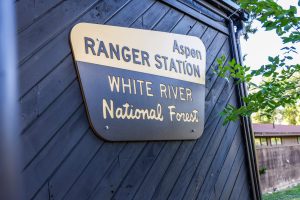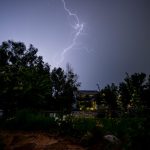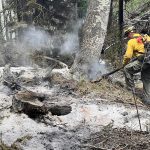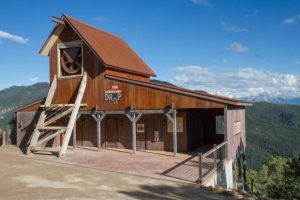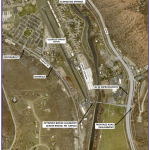Amid US Forest Service cuts, one Colorado community is pushing back with a public messaging campaign
Colorado’s Roaring Fork Valley has seen bathrooms and visitor centers close as federal cuts have taken a toll
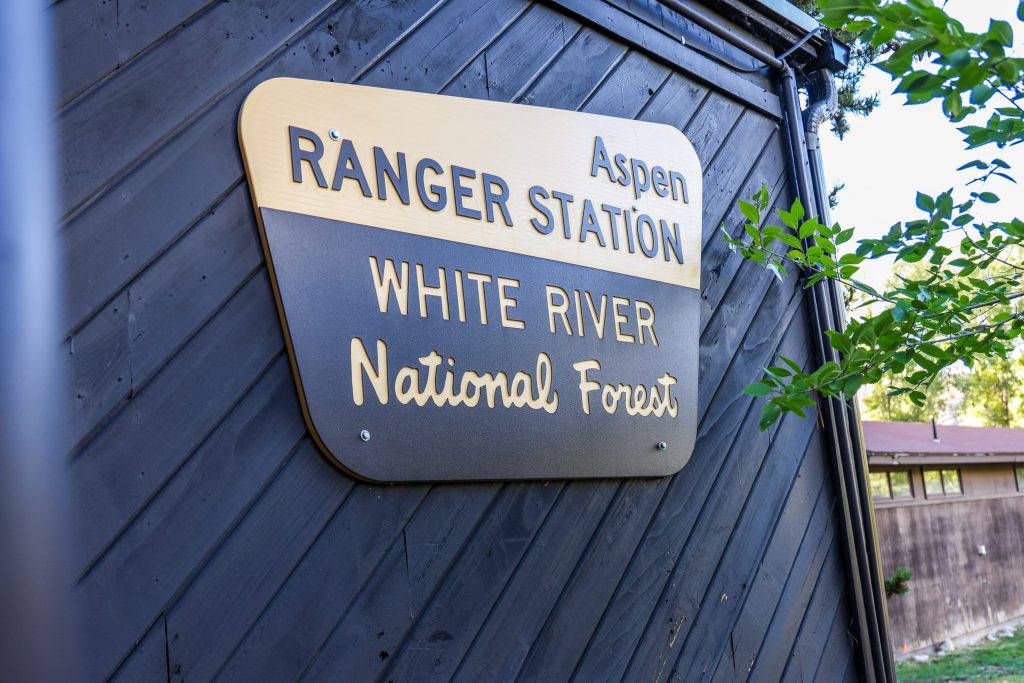
Austin Colbert/The Aspen Times
Independence Pass Foundation Executive Director Karin Teague knows how much people love Colorado’s public lands.
Open May through October, the stretch of Highway 82 that spans the Continental Divide at 12,095 feet gets “hammered” by hundreds of thousands of drivers each season, Teague said. The paved road is flanked by public lands, including two national forests, making it a popular recreation destination.
But this year, after President Donald Trump’s administration slashed U.S. Forest Service staff and funding, Teague said the federal agency stopped paying for the vault toilets along the pass to be cleaned and bowed out of an agreement to help pick up litter.
“There’s part of me that said, ‘Close the bathrooms. Let people feel the real impacts of these funding cuts. This is what happens when you don’t pay for services — you don’t get toilets,'” Teague said. “A decision was made by my organization and others that this was too important an issue, for environmental health reasons and human health reasons, not to address.”
This summer, with support from the Aspen Chamber Resort Association and Pitkin County, Teague said the Independence Pass Foundation pulled together nearly $25,000 to pay to have the toilets cleaned five times a week. The other two days, she said, the nonprofit’s staff and volunteers have been cleaning the toilets themselves.
“People have to go to the bathroom. That’s all there is to it,” Teague said. “We want visitors to have a good experience. That’s hard to do if you can’t provide basic services.”
Closed visitor centers, locked bathrooms

Descending Independence Pass toward Aspen, drivers enter the White River National Forest — America’s most-visited national forest and a hub of recreation. Here, the impacts of short staffing at the Forest Service become more obvious.
The White River National Forest Supervisor’s Office in Glenwood Springs, as well as the two Aspen-Sopris District ranger stations in Aspen and Carbondale, are closed to the public indefinitely due to a lack of staff.
At the Aspen Highlands shuttle stop for visitors to the Maroon Bells, signs warn that there are “fewer amenities this summer.”
That’s because the information center and a majority of the bathrooms at the Maroon Bells Scenic Area — which has seen more than 175,000 visitors annually in recent years — were closed this summer. There was also no drinking water there this year.

Despite the closures, outdoor recreation remains as popular as ever in Colorado. In the Roaring Fork Valley, the Public Land and Water Forum — a coalition of local government agencies and nonprofit groups — is demonstrating how mountain communities are stepping up to respond to the cuts to federal land management agencies.
“People are still coming to recreate,” Roaring Fork Outdoor Volunteers Executive Director Rebecca Schild said. “There certainly is not a response of like, ‘Oh, the bathrooms aren’t open or amenities aren’t as available, we won’t come.’ It’s just as busy as previous years.”
The Public Land and Water Forum
Days after Trump took office, his administration began downsizing the Forest Service and other federal land management agencies. Colorado mountain communities — where a vast majority of land is federally owned — braced for impacts.
The Trump administration fired an estimated 3,400 Forest Service employees nationwide at the start of his second term in office. Since then, hundreds more workers have left through the administration’s deferred resignation option, which allowed federal employees to voluntarily resign while continuing to be paid for months.
“Lots of individuals, local nonprofits and local government agencies have really stepped up to fill in some of the gaps, the tremendous gaps, left by the absence of the Forest Service and other federal land management agencies,” Teague said.
The Trump administration has claimed the cuts aim to reduce “waste” and “bloat” in the federal government and that state and local governments need to take more responsibility for managing public lands.
But former White River National Forest Supervisor Scott Fitzwilliams — who retired this year through a deferred resignation — has described cuts to the Forest Service as part of a “deliberate dismantling” of public lands.
Fitzwilliams has said publicly that he felt forced to leave his post of more than a decade after the Trump administration required him to fire 16 employees. Of those employees, he said 15 were funded through permit fees, like the overnight fees at the Maroon Bells, or by partners, like nonprofits and county governments, not the federal government.
The Trump administration also said the federal cuts wouldn’t impact wildfire preparedness. But the Forest Service ultimately let go of hundreds of “red card holders” with credentials to assist on wildfires and had to hire employees back.
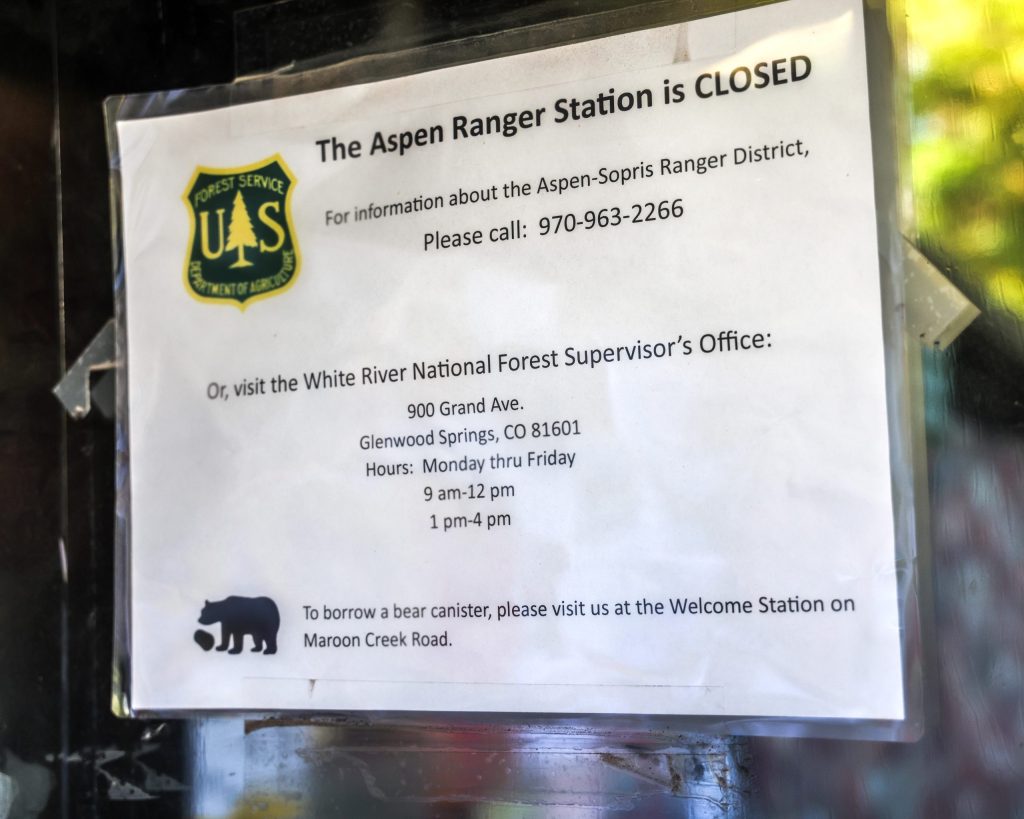
Formed in response to the cuts to the Forest Service, the Public Land and Water Forum includes representation from the city of Aspen and the Pitkin County government, as well as from nonprofits, like the Roaring Fork Outdoor Volunteers and the Independence Pass Foundation. Its members, many of whom have worked with the Forest Service for decades, have leveraged their close ties with federal land management agencies to understand the local impacts of the funding cuts.
Pitkin County Open Space and Trails outreach specialist Jami McMannes said the Public Land and Water Forum’s “intent is to get the word out to the community about what they can do to take action and how they can support our public lands through this time of uncertainty.”
Roaring Fork Public Lands
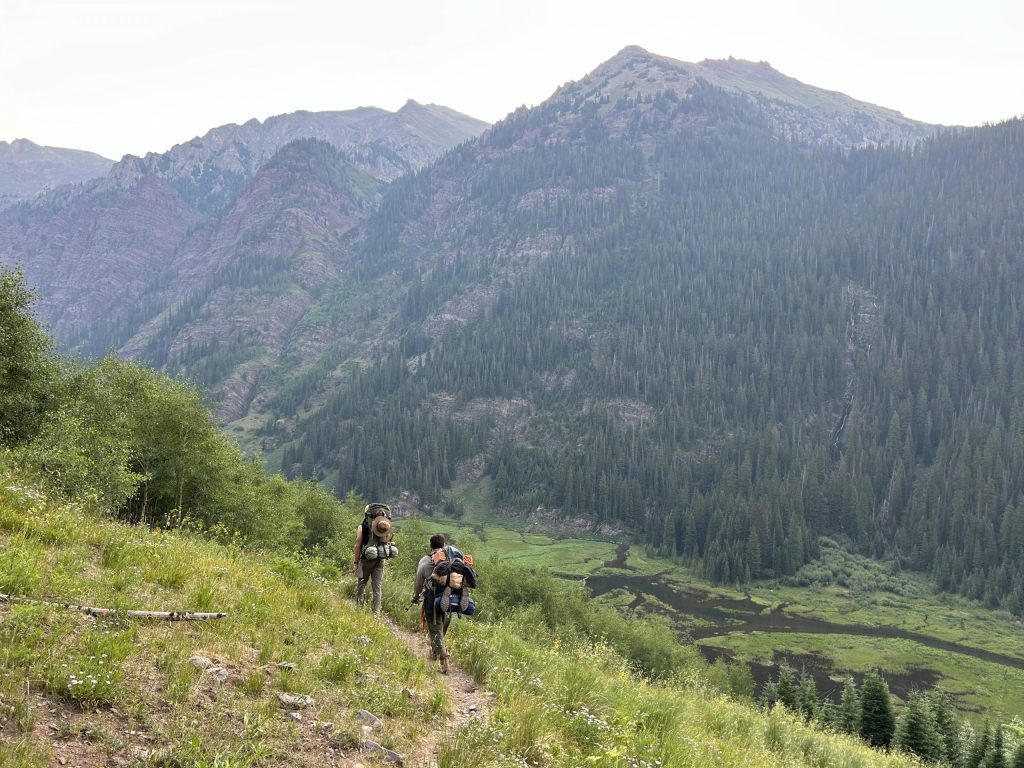
At the Aspen/Pitkin County Airport, a 60-second video has been playing twice an hour this summer, informing visitors that “public lands are in danger.”
The video is part of a messaging campaign from the Public Land and Water Forum that aims to inform people about how cuts to the U.S. Forest Service are impacting the Roaring Fork Valley, and how to take action to protect public lands.
“They’re wild. Not invincible,” the video says of the 652,895 acres of public land in the Roaring Fork Watershed. “This isn’t about overuse. It’s about federal budget cuts. Rangers eliminated. Visitor centers closed. Fire risk rising.”
Public Land and Water Forum’s messaging campaign “arose out of an acute need,” McMannes said. There are fewer Forest Service staff to patrol for abandoned campfires and educate visitors this year, she said. So, the campaign aims to help make up for that absence of federal employees.
On sandwich boards at trailheads and posters at coffee shops, libraries and other public places in Aspen, Carbondale and Glenwood Springs, the campaign implores people to “be the reason public lands stay wild.” It aims to educate public land users on backcountry etiquette with reminders to pack trash out, use a “WAG” bag or dig a hole while pooping outdoors and fully extinguishing campfires.
“We’re very much supporting the ‘recreate responsibly’ messaging, knowing there are fewer staff out there picking up trash, monitoring for campfires — doing all the things we’ve become accustomed to our federal partners doing over the years,” City of Aspen Natural Resources Manager Shelly Braudis said. “It’s really up to us to educate the public.”
The campaign also tells people how to speak out for public lands. Through a QR Code, the signs and posters bring visitors to RoaringForkPublicLands.org, which contains information about how the federal cuts have impacted the valley and instructions for how citizens can write or call their members of Congress to express their opinions about public lands.
“On a philosophical level I think that our system of public lands is one of the things that makes the United States stand out and is so amazing, from a conservation perspective but also from a recreation perspective,” Schild said. “So, I think it’s important to just recognize that legacy, and if we lose it we’re never going to be able to get it back”
Long-term impacts
With no sign that Forest Service staffing or funding will improve in the years to come, members of the Public Land and Water Forum are looking to the future to figure out where they can be most helpful.
With visitor centers closed, Schild said Roaring Fork Outdoor Volunteers is looking into whether it could take on a new role: staffing visitor information services with volunteers next summer.
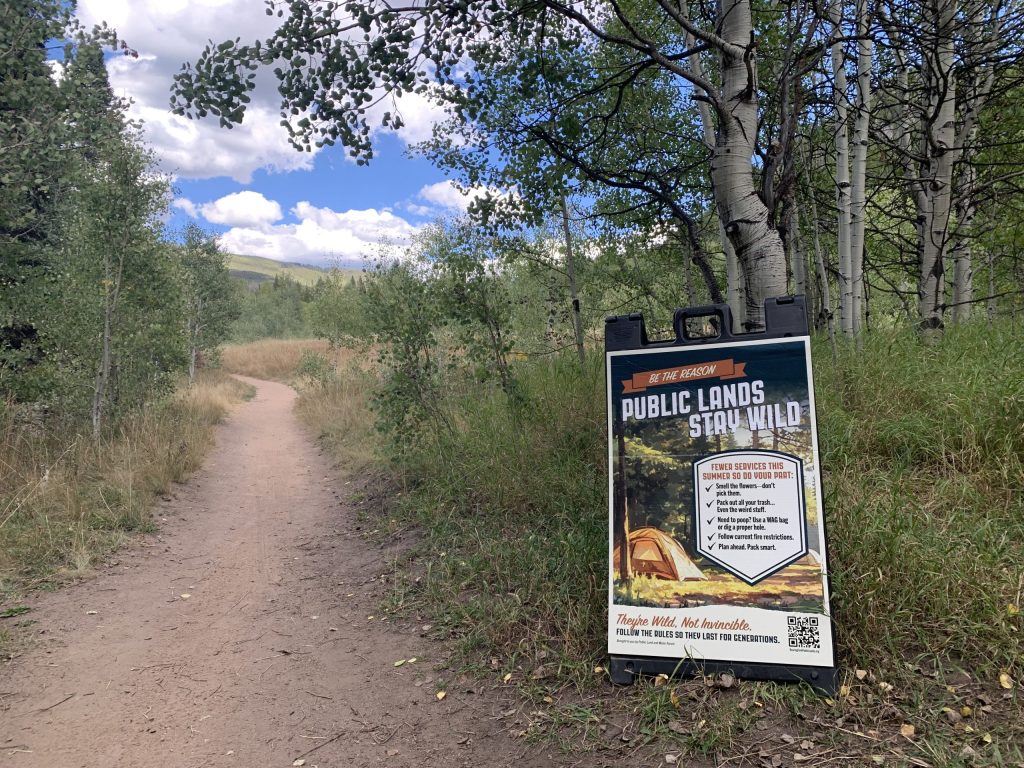
“Visitor information services are very important to make sure that visitors are safe, that they’re recreating responsibly, that they understand the area that they’re going to,” Schild said. “Without that information I think we might be seeing a greater impact on the land, more accidents or lack of following regulations.”
But volunteers can’t fill every role that is vacant in the Forest Service. The Aspen-Sopris Ranger District, for example, doesn’t have a wildlife biologist on staff due to the cuts, according to members of the Public Land and Water Forum.
Adam McCurdy, the forest and climate director for the Aspen Center for Environmental Studies, which is a member of the forum, said that not having a wildlife biologist has delayed projects in the Roaring Fork Valley.
“We’ve worked with the Forest Service on prescribed fires, fuels treatments (and) vegetative restoration. In order to do those, you need a wildlife biologist on the forest,” McCurdy said “There’s no way around it. You can’t supplement that with another organization.”
Without Forest Service staff to help plan and approve future projects, McCurdy said he expects to see fewer projects “in the pipeline” moving forward — resulting in fewer trails being cleared of debris, impacts to ecosystems and rising wildfire risk.
“If we’re concerned about wildfire, which I think most of us are, and we want to see more forest restoration that will make us safer — we’re not able to do that,” McCurdy said. “That’s not something you’re able to see on your one-week vacation. But it’s something that accumulates over the years.”
Despite their efforts, the members of the Public Land and Water Forum said that local governments, nonprofits and volunteers won’t be able to support the well-visited public lands in the Roaring Fork Valley forever.
As time goes on, Teague wonders how the Independence Pass Foundation will continue to fund the bathrooms along the pass, for example. The cost of funding the bathrooms this year was a “large, unanticipated expense” for a nonprofit funded by donations and staffed mostly by volunteers, she said.
“It’s heartening to see the outpouring of support, but volunteers won’t be willing to clean toilets for the next three years,” Teague said. “We need to get back on track with the proper management and care of these places.”

Support Local Journalism

Support Local Journalism
Readers around Glenwood Springs and Garfield County make the Post Independent’s work possible. Your financial contribution supports our efforts to deliver quality, locally relevant journalism.
Now more than ever, your support is critical to help us keep our community informed about the evolving coronavirus pandemic and the impact it is having locally. Every contribution, however large or small, will make a difference.
Each donation will be used exclusively for the development and creation of increased news coverage.

